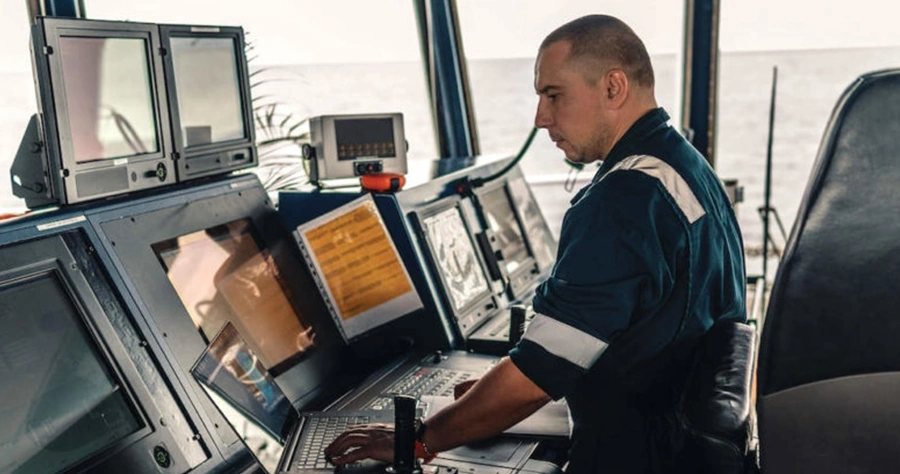Bandwidth, orbits and networks: how digital strategy overcame technology choices in maritime
A more complex, regulated landscape for vessel operators has brought challenges around applications and network security into focus, writes Tore Morten Olsen, President, Maritime, Marlink

A survey of the shipping industry 20 years ago would have found ship operators and service providers in an uneasy stalemate. With a virtual monopoly in place, communications limited to safety alerts, barely-affordable voice calls and minimal text messages, there was little appetite for a fight.
Slowly, competition to the incumbent Inmarsat emerged, in the form of Iridium’s initial constellation and regional offerings from GlobalStar and Thuraya. Despite some big promises, these services were still far from revolutionary – all were still based on L-band with low throughput– but at least there were alternatives. The first battle of the satellite communications competition had been joined.
The Battle of The Bands
Fast forward another five years or so and the next phase broke out. The battle of the bands saw higher bandwidth VSAT services break out from offshore and other high-end markets and begin to make inroads into mainstream commercial shipping markets.
Gradually supplanting L-band services as the primary communications channel, VSAT would provide much higher bandwidth and enable the first phase of maritime digitalisation. Soon the providers were expending marketing ammunition over which band was best suited to maritime applications.
Since shipowners mostly cared more about buying bunkers and making port times – and increasingly on providing communications to crew - there was a valuable battleground to contest. The frequency on which the services were delivered soon became irrelevant.
Not all orbits are equal
Five years ago, the next front was opened, as suppliers sought to push the relative benefits of the orbits in which their satellites operated.
Should operators stay with geostationary (GEO) VSAT services that could provide a global service but also suffered from service blockages and a lack of polar coverage? Should they get behind the new heavyweight Medium Earth Orbit (MEO) services being offered by new entrants and potentially add capacity in specific regions?
Then we saw the emergence of new Low Earth Orbit (LEO) services from Starlink and OneWeb – and Iridium too had by this time launched an upgraded L-band LEO service and would go on to become a rival safety services provider to Inmarsat.
Dramatic reductions in latency and increases in throughput speeds disrupted a market that had become used to services that were reliable if not exciting. The result of this change is that, maritime bandwidth and the networks it runs upon, is no longer a limiting factor for the maritime community to enjoy office-like connectivity experiences .
Managing Change
Which brings us to the landscape of today. When land-like connectivity is near to ubiquitous, what is left for the incumbents to fight over? Quite a lot as it turns out.
In a market disrupted by geopolitics and supply chain stress, shipowners are engaged with digital strategies that enable them to operate at maximum availability, sharing data with fleet management centres, stakeholders and even regulators, on demand.
Putting technology onboard with minimal intervention and limited integration no longer delivers the required level of benefit. Solutions must be managed and networks constructed to reflect the business need.
For example, the ability to adopt collaborative workflow software, share cloud-based data, enable remote survey and maintenance access requires systems to be defined by application priority. This calls for expertise in hybrid networks that extends far beyond the connectivity channel.
New frontiers
Operating a digital-first strategy means providers must create and orchestrate a solution that blends all connectivity options, delivers the applications that drive operations and provide security tools on a global basis.
The spread of high bandwidth networks able to bundle LEO, VSAT and 4/5G means that owners can use LEO services as a recruitment and retention tool, buying flexible plans that can be shared across a fleet while using VSAT for guaranteed throughput communications.
Pressure is being felt from new vectors too. For a long time the limited bandwidth available to operators effectively shielded the industry from the attention of hackers. The unlocking of bandwidth with the addition of LEO services means owners must be far more aware of threats and have services in place to defend themselves.
Regulators have also begun to act, with class society rules for newbuilding vessels and stringent European Union rules forcing a change in approach. Shipowners need to shift from a defensive posture to a proactive one and prepare for much more concerted threats – and stiffer penalties for non-compliance.
Ad Astra
The shipping industry of today looks superficially like that of 10 years, but from an operational, regulatory and compliance standpoint, it’s very different. Tactics and strategy have changed as assets range ever more widely around the theatre of global trade.
The battle of the networks may be over but a bigger transformation has taken place. The availability of bandwidth means that the terms used to describe networks have become less important than the service they provide.
The ability to provide a complete solution means understanding which combination of bandwidth, managed services and cyber tools delivers best against customer need. That in-depth expertise counts more than the way services are named or marketed. The challenges of today’s global industry mean having the right tools is essential.
So is the era of head-to-head competition over for good? History suggests that it won’t be as simple as that. But perhaps the primary lesson to take away is that shipowners and operators who have engaged with a digital strategy stand to gain the most. Even so, they should also be prepared to challenge their network providers and ask what they will do to help them win the settlement.
This article was published on 22.08.2024 on Splash 247.

